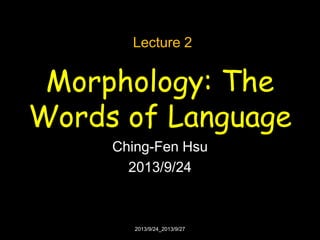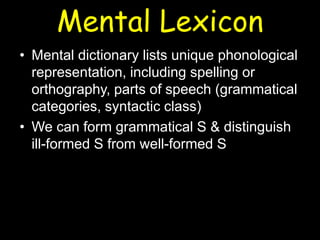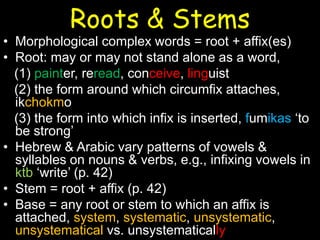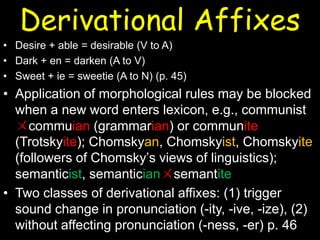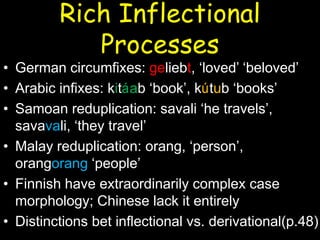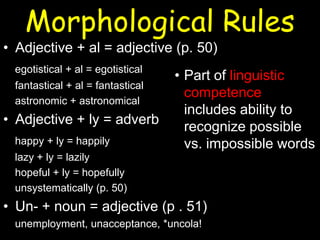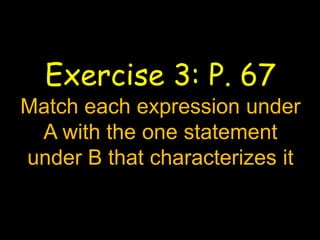Morphology is the study of the internal structure of words. It examines how words are formed through the combination of morphemes, which are the smallest units of meaning. There are two types of morphemes: free morphemes that can stand alone as words, and bound morphemes that must be attached to other morphemes. Words can be made up of multiple morphemes arranged in a hierarchical structure. Languages have morphological rules for word formation using prefixes, suffixes, and compounding. While morphological rules are productive, there are also exceptions in the form of irregular words.
